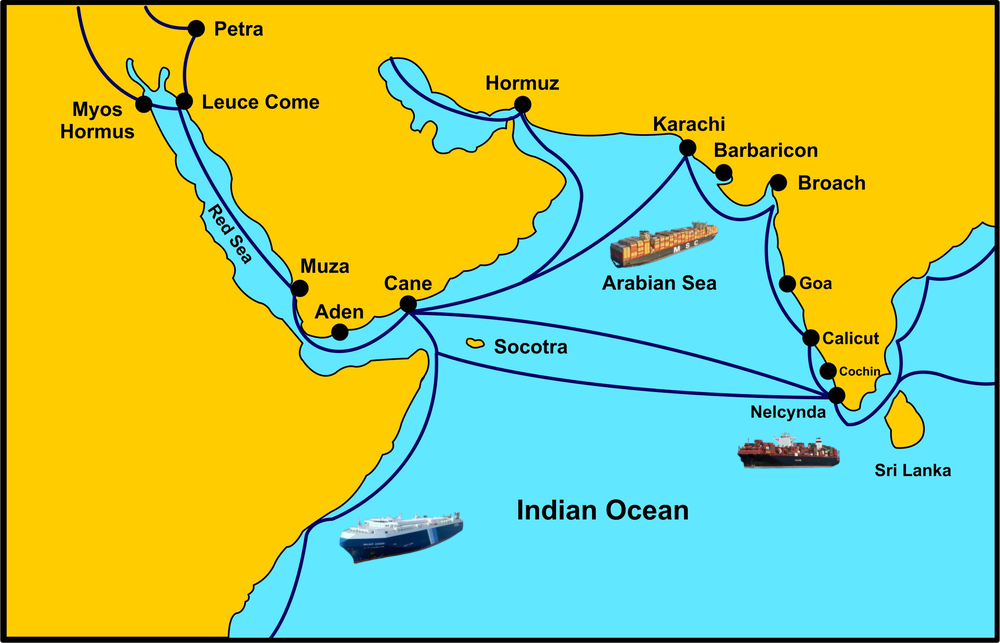|
Getting your Trinity Audio player ready...
|

Established in 1869, the Suez Canal is a vital sea route that links the Mediterranean and the Red Sea, providing significant cost and distance savings. Historically, this strategic passageway has assisted in effective international trade, which has benefited the Middle East, Asia, and Europe. But a new trend indicates an alteration akin to the Middle Ages when commercial ships chose to circumnavigate the southernmost point of Africa.
Vasco Da Gama undertook a voyage along the Cape of Good Hope in 1498, eventually discovering a new maritime route for trade in quest of India. This alternate route supplanted the Silk Road, which had been captured by the Ottoman Turks. However, the Suez Canal, constructed in the 1860s, provided a significant shortcut, aiding a sustainable path for international commerce.
The Suez Canal, a keystone in worldwide trade and commerce, contributes greatly to Egypt’s national revenue, managing almost 30% of the world’s traffic. Its construction, initiated in 1864 by Egyptian ruler Ismail Pasha working alongside French engineer Ferdinand de Lesseps, brought about shared ownership and management by French and Egyptian governments at its inception. However, financial difficulties compelled the subsequent sale of shares to the British. The world first learned of the canal’s strategic significance in 1956 when Gamal Abdel Nasser, the president at the time, nationalised the canal, sparking the Suez Crisis and prompting military intervention by France, Israel, and the United Kingdom. As things stand, Egypt still controls the canal.
It appears that recent commercial trade has veered off course, circumnavigating the Cape of Good Hope, taking longer and covering more ground than before. The resurgence of commerce defaulting to historical trade routes can be attributed to the actions of the rebel group known as the Houthis. Their movement, which has its roots in Yemen, began in the early 1990s as a reaction to political and religious injustices. They sought more rights for their community, which is Zaidi Shiites. The group engaged in periodic skirmishes with the government, eventually acquiring control of the capital, Sanaa, and expanding its authority across the country. Internationally, Iran is accused of providing military and financial support to the Houthis, which it denies; nonetheless, this conflict is frequently viewed as part of a greater regional rivalry between Iran and Saudi Arabia, (which established a coalition in response to the Houthis led by Saudi Arabia).
The eastern part of the Red Sea opens up to the Indian Ocean through Bab al man-dab a strategic strait connecting the Red Sea to the Gulf of Aden. Houthi forces in the path of asserting their influence are attacking and bombarding the commercial ships entering into the strait and disrupting the movement of goods; it is a form of retaliation or resistance and a way to exert pressure on the international actors to achieve their objectives. This has brought about supply chain challenges, prohibiting commercial vessels from navigating the Red Sea and inhibiting them from crossing the entry/exit point Bab al Man-dab strait into the Suez Canal. Global trade is being harmed, producing a ripple effect from Asia to Europe and then from Europe to the Americas. Acute worldwide vessel capacity shortages have increased commodity prices around the world.
World Economic Forum president Børge Brende in an exclusive interview said that ‘The ongoing tensions in the Red Sea due to recurrent attacks on the merchant ships by Yemen’s Houthi rebels have a negative impact on the global supply chain and would lead to a $10-20 increase in oil prices for oil importing countries like India, which could have negative effects on its economy’. ([1])
I believe that a multimodal strategy is necessary for an overall resolution to the present situation. Addressing only economic factors would most likely be insufficient; so, an integrated approach needs to encompass political, security, economic, and humanitarian dimensions. International organisations, such as the United Nations, must play an essential role in encouraging diplomatic efforts aimed at facilitating peaceful conversations between warring parties. Regional actors can make a big contribution by mediating peace talks and encouraging cooperative solutions.
Relief from the current conflict depends critically on the development of open peace procedures and the search for sustainable political solutions. It is critical to establish strong security governance in the Middle East. Beyond immediate security concerns, reconciliation efforts must address underlying political difficulties, with a focus on development and governance. A greater emphasis on economic development, in conjunction with humanitarian help, is critical for achieving long-term stability in the region. This broad strategy strives to address the crisis’s underlying roots and set the groundwork for long-term peace and development.
The Red Sea crisis must be recognised as a worldwide security threat, necessitating a coordinated international response to appropriately handle the rapidly worsening Yemeni situation. There is an urgent need for a comprehensive global consensus that emphasises collective action and collaboration. Recognising the gravity of the situation, nations throughout the world must work together to develop and implement a coordinated strategy for containing and resolving the complex difficulties unfolding in the Red Sea region. This unified reaction stresses the relevance of coordinated international actions to promote global stability and security.
(Sindhuri Sai is pursuing a degree in law at the Campus Law Centre, University of Delhi. Views and opinions expressed are the author’s own)
[1] Prateek Chakraborty ( Jan 15, 2024) ‘Red Sea crisis will lead to oil price hike in India: World Economic Forum chief’, India Today.
Sindhuri Sai is pursuing a degree in law at the Campus Law Centre, University of Delhi. Views and opinions expressed are the author’s own.
